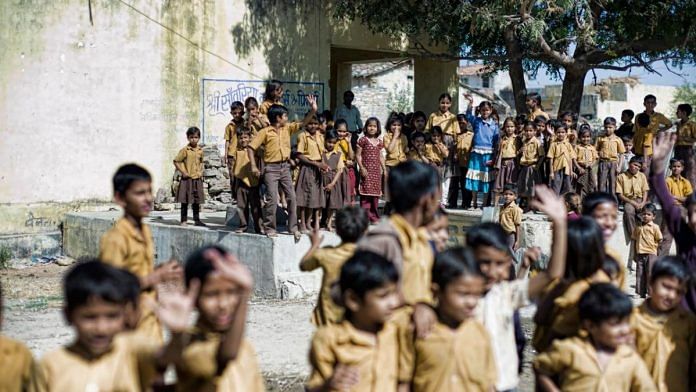New Delhi: It’s often argued that a country’s economic growth can bring down its crime rate. But a new study of Indian states published in the US has shown that social spending and allocation of separate budgets for children can be more effective in reducing crimes against children than mere economic prosperity.
According to the 2011 census, more than a third of India’s population is aged under 18 years, and latest data from the National Crime Records Bureau has shown that a crime against a child is reported in the country every four minutes.
In a paper published by Levy Economics Institute of Bard College, New York, an economic research organisation, the authors have analysed potential factors that are interlinked with reduction of crime against children — namely economic growth, social spending and child-specific budgeting.
The study, published earlier this week, was conducted by Jitesh Yadav and Lekha Chakraborty of Delhi-based think tank National Institute of Public Finance and Policy (NIPFP).
Also read: Lack of parental care behind spike in crime involving teenagers in Haryana: Experts
What reduces crime
The authors first examined the relationship between economic growth — measured by the per capita income of Indian states (per capita Gross State Domestic Product) — and the number of child-related crimes in those states between 2013 and 20.
According to the study, per capita income and crimes against children are slightly positively related to each other. The authors said that states with higher per capita income tend to have higher number of crimes against children.
Further analysis by the authors showed that targeted social spending has a stronger impact on reducing child-related crime.
The study used social sector spending statistics (2013-20) taken from the budget documents of states, which mention how much money was being spent on health, education and other social facilities. It stated that a one per cent point increase in long-term spending on social infrastructure tends to reduce crime against children by 34 percentage points.
“Based on the estimated coefficients, a rise in social spending has a bigger effect than a similar rise in GSDP per capita. So, if the goal is to reduce crime against children, it is not enough to just make the state richer. Instead, a policy that focuses on social spending has the potential to provide better outcomes,” the authors pointed out.
The authors also studied the impact of having separate budgets for children — a formula recently adopted by some states. Bihar, Assam, Odisha, Kerala, Maharashtra, Chhattisgarh and Karnataka have introduced child budgeting in the recent past.
Child-specific budgeting is basically a part of social spending with schemes targeting children and their welfare. School education, sports and youth-related activities, social and welfare expenditure related to children dominate the spending.
The study stated that depending on the date of inception of these policies, having separate “child budgeting” can reduce crime against children by 0.38-0.40 per cent points. “The duration of child budgeting in a state is found to be inversely related to the incidence of crime against children,” it added.
According to NIPFP’s Chakraborty, this goes on to show that economic growth is not the only objective one should achieve in order to bring about social change. Long-term spending on social infrastructure is crucial for better outcomes.
“Higher economic growth per se does not translate into better human development outcomes. It’s an established fact and that’s why long-term public finance management tools, like gender budgeting and child budgeting, are so crucial in shaping the role of public policies,” she said.
(Edited by Nida Fatima Siddiqui)
Also read: What does 5 yrs of school give? 1960s-born Indian women learnt more than 1990s kids, says study



